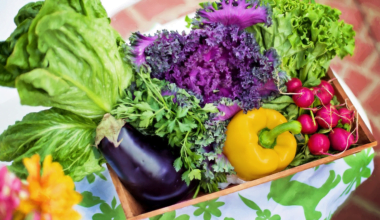Hanging plants are a great way to add life and greenery to any room, but they can be tricky to care for. If you’re not careful, your hanging plants can be damaged by pets, children, or even by you as you attempt to water them.
The best hanging plant to plant is the one that suits your style, the space you have, and the amount of effort you want to put into caring for it.
7 Indoor Hanging Plants Any Beginner Can Easily Grow and Manage
#1. Pothos

Pothos plants have heart-shaped leaves with variegated white, green, and yellow patterns on them. They’re relatively easy to care for and are often used as houseplants because they don’t require much light or water.
Their growth habit is vine-like, so they need something to climb on in order to thrive properly. They’re so easy to maintain, you basically just have to water them occasionally and keep them away from direct sunlight.
You can also train pothos plants into different shapes by attaching them to different surfaces such as trellises or walls with string or wire ties.
#2. Aloe Vera

Aloe Vera is a succulent plant with thick leaves and flowers. You can grow it indoors or outdoors, but it’s best suited for sunny windowsills.
It requires little care, but make sure it doesn’t get too much water or too little light. The plant will eventually produce small flowers that look like pinkish-white bells.
#3. String Of Hearts

The string of hearts is a beautiful and simple indoor plant that you can use to add some color to your home. It’s easy to grow, making it an ideal plant for beginners.
It’s also one of the easiest plants to propagate, so you can easily grow several from one plant.
It’s also known for its heart-shaped leaves and long stems. This plant can grow up to three feet tall and can be easily trained up any surface, making it a great option for hanging baskets.
#4. String Of Pearls

String of Pearls is a succulent plant that makes a beautiful hanging plant. It has thick, fleshy leaves which are used to store water and nutrients. This plant can be grown in a hanging basket or in the ground.
The String of Pearls has dark green leaves with white veins running through them. In springtime, it produces small white flowers that hang down from the stem.
The String of Pearls needs lots of suns but not too much heat so it is best to grow this plant outside in the summer months and bring it indoors when the weather gets colder.
#5. Peperomia

If you’re looking for a houseplant that will thrive in low light, the Peperomia is a great choice. It’s easy to grow and doesn’t need much water or fertilizer.
Peperomia plants have small, rounded leaves that are often variegated in shades of green, white, and yellow. The plant’s flowers are small and usually white, but they do not last long.
Peperomia plants can be grown as ground cover or in hanging baskets. They prefer bright shade or indirect light but will tolerate some direct sunlight if it’s not too hot.
#6. Staghorn Ferns

Staghorn ferns are a popular house plant because they can tolerate low light and dry air. They also add an interesting texture to any room.
Staghorn ferns are native to Central and South America, but they are now grown in tropical regions around the world. They are easy to care for and grow well in terrariums or outdoors as long as they have plenty of sun exposure.
#7. Burro’s Tail

The Burro’s Tail succulent plant is a favorite of many because of its unique appearance and ease of care. The leaves are long, thin, and wiry with a reddish-brown color on the underside that gives the Burro’s Tail its name.
These plants will grow well in hanging baskets and also look great as ground cover or planted in rock gardens. They need full sun to partial shade to thrive, so they make an excellent addition to any garden.
Final Thoughts
Hanging plants have grown in popularity in recent years and they are the most innovative types of decorations. Hang them anywhere in your house to add a splash of color and liven up your home. Most people are tempted to put them on a balcony and give the balcony a good splash of color but you can put them inside your house as well.

